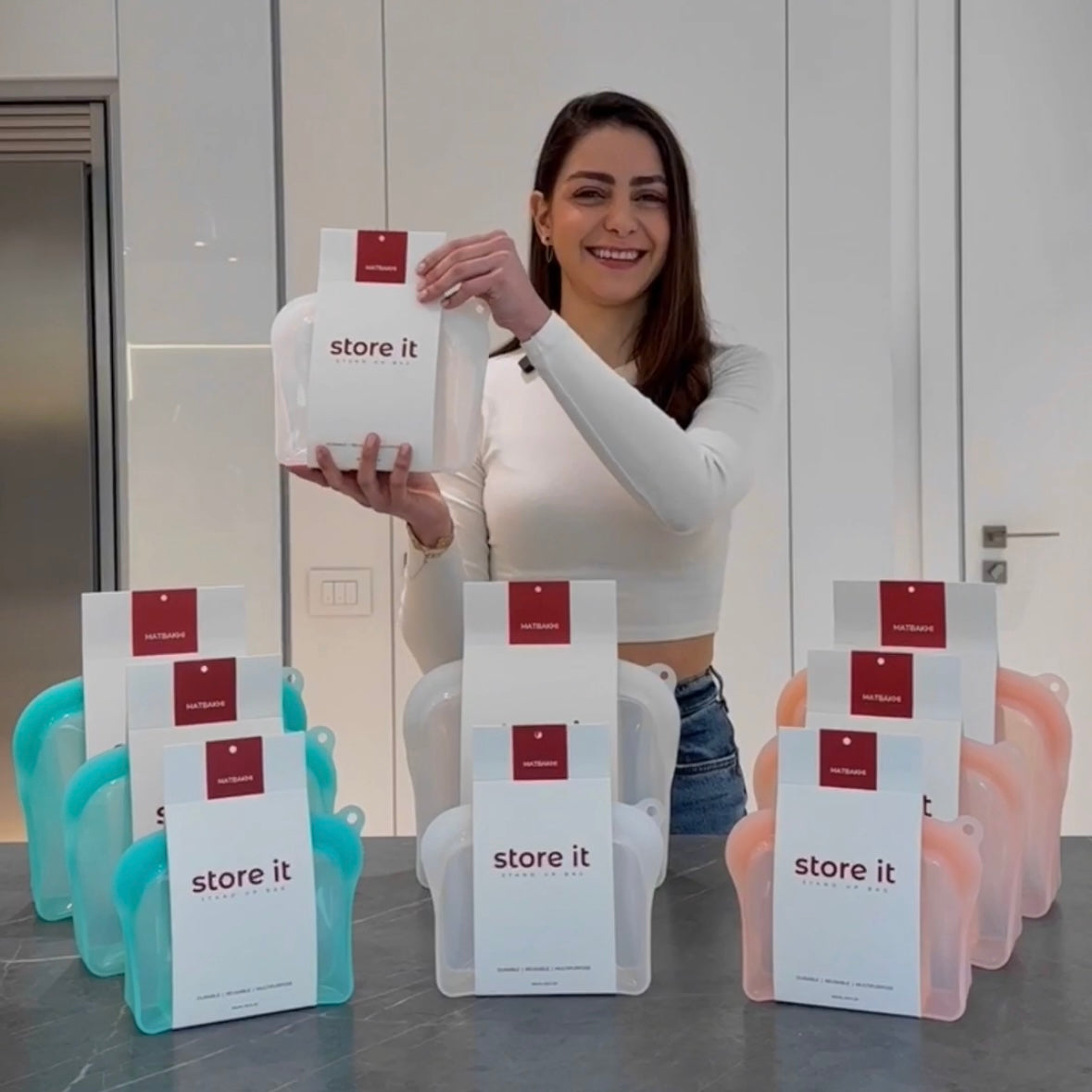Storing food properly is essential to maintaining its freshness and nutritional value!
With the growing awareness of environmental sustainability, many people are turning to eco-friendly alternatives to single-use plastic bags. Our “Store It” bags are perfect for this purpose, additionally offering airtight sealing and leakproof features.
Here’s a short guide on how to store various types of foods like veggies, fruits, beans, grains, and pasta using these bags:
1. Storing Veggies:
Vegetables can quickly lose their freshness if not stored properly. “Store It” bags provide an airtight environment that helps preserve the crispness and nutritional content of your veggies.
For leafy greens, such as spinach and lettuce, rinse and dry them thoroughly before placing them in the bag. For vegetables like carrots, cucumbers, and bell peppers, chop them into convenient sizes and store them directly in the bag. This method not only keeps them fresh but also makes them ready to use for quick meals and snacks.
2. Storing Fruits:
Fruits can be delicate and prone to spoilage, but “Store It” bags can help extend their shelf life. Berries, such as strawberries and blueberries, should be washed and dried before storing in the bag.
For larger fruits like apples, oranges, and pears, you can either store them whole or cut them into slices. The airtight seal of the bags prevents moisture loss and keeps the fruits juicy and delicious.
3. Storing Beans or Grains:
Dry foods like beans and grains benefit greatly from being stored in an airtight environment. Whether you have black beans, quinoa, rice, or lentils, “Store It” bags will keep them dry and free from contaminants.
Simply pour the desired quantity into the bag, seal it tightly, and store it in a cool, dry place. The clear silicone allows you to easily see the contents, making it simple to keep track of your pantry supplies.
4. Storing Pasta:
Pasta is a pantry staple that needs proper storage to maintain its quality. Using “Store It” bags, you can store both cooked and uncooked pasta. For uncooked pasta, place it in the bag and store it in a dry, cool place.
If you have cooked pasta leftovers, allow them to cool before placing them in the bag and then refrigerate. The airtight seal keeps the pasta from drying out and prevents it from absorbing unwanted odors from the fridge.
In conclusion, proper food storage is key to minimizing waste and maintaining the quality of your ingredients. With “Store It” bags, you can store a wide variety of foods like veggies, fruits, beans, grains, and pasta efficiently and eco-consciously.



